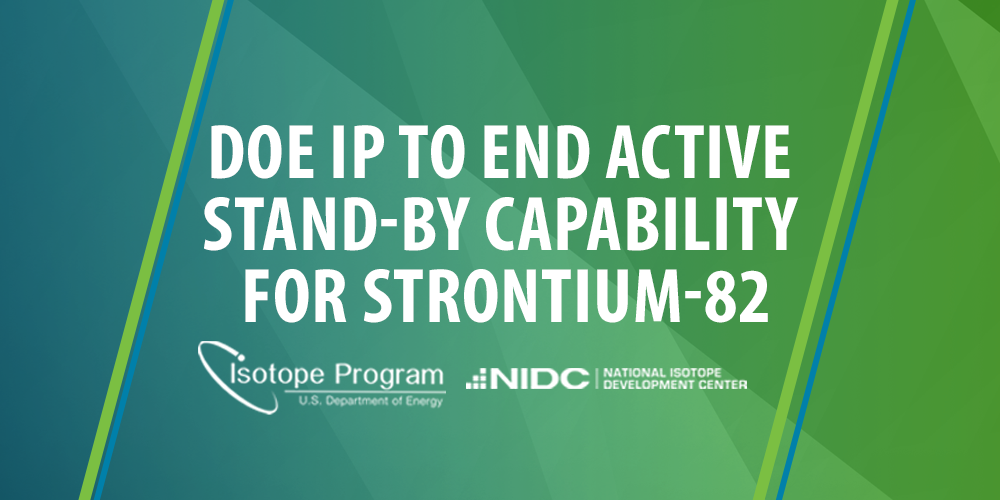DOE IP to end active stand-by capability for strontium-82

DOE IP to end active stand-by capability for strontium-82
The U.S. Department of Energy Isotope Program (DOE IP) is ending the active stand-by capability for strontium-82 (Sr-82). The commercialization of the Sr-82 supply chain is a success story for both industry and the DOE IP as an example of nurturing new isotopes within the community until the market becomes economically viable for industry.
In the early 2000s, the DOE IP introduced a consistent supply of Sr-82, enabling improved cardiac patient diagnoses. Strontium-82 is the parent isotope used in Sr-82/Rb-82 medical generators. With a half-life of 75 seconds, the rubidium-82 (Rb-82) daughter isotope obtained from these generators acts as a positron emission tomography, or PET, tracer for cardiac imaging in adults. The Rb-82 also provided an alternative to molybdenum-99 cardiac heart imaging whose supply chain was at times fragile.
As demand for Sr-82/Rb-82 increased, private industry began to enter the supply chain. The DOE IP offered technical support to the community and helped facilitate the commercialization. Since 2020, the DOE IP has maintained active-standby capability for emergency backup to ensure a steady market supply of Sr-82 while private industry supply chain matured.
Today, multiple North American companies have successfully demonstrated reliable Sr-82 production as well as effective competition. By ending active-standby status, the DOE IP will reassign those dedicated radioisotope production capacities to other mission needs.




